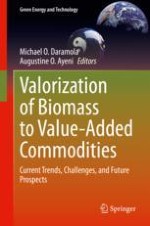This book presents the most up-to-date technologies for the transformation of biomass into valuable fuels, chemicals, materials, and products. It provides comprehensive coverage of the characterization and fractionation of various types of biomass and details the many challenges that are currently encountered during this process. Divided into two sections, this book discusses timely topics such as the characterization of biomass feedstock, pretreatment and fractionation of biomass, and describes the process for conversion of biomass to value-added commodities. The authors bring biomass transformational strategies that are yet to be explored to the forefront, making this innovative book useful for graduate students and researchers in academia, government, and industry.
